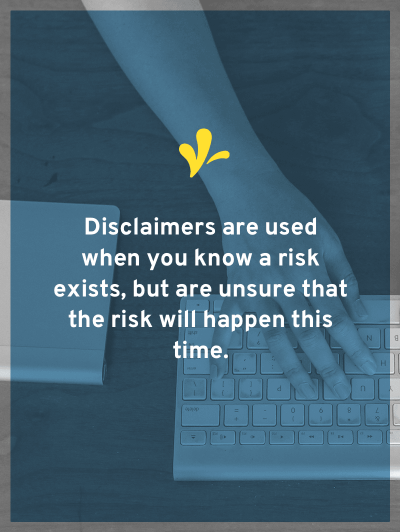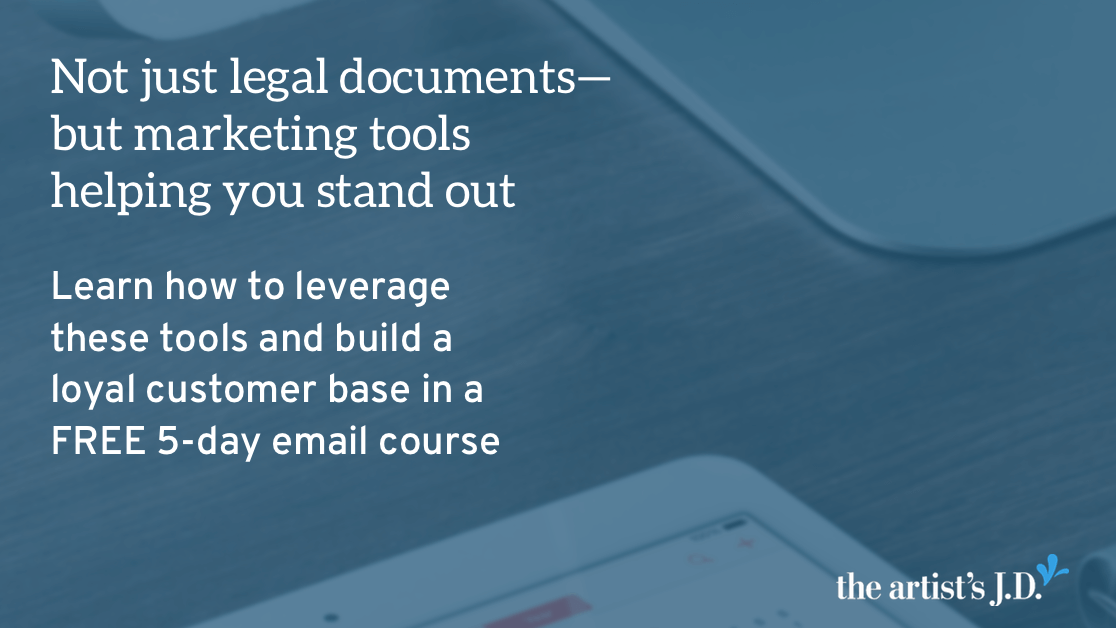We’ve covered your terms of use and privacy policy. Now we are turning to the final piece of the puzzle: the disclaimer.
Disclaimers are pretty common in contracts and you accept them every day. For example, think about the last time you parked in a parking garage. I bet there was a bit of text on the ticket letting you know that they weren’t liable if your car got stolen or broken into. The one sitting on my desk says this:
THIS CONTRACT LIMITS OUR LIABILITY – PLEASE READ IT. The management assumes no responsibility for auto accessories or articles left in car. No liability is assumed by management for loss or damage by fire, theft, or any other cause to, or by the vehicle, while in custody of the management. Management will not be responsible for any incident reported after the vehicle has left the premises.
That my friends, is a disclaimer. They are used when you are uncertain the exact risk you face, but you know that the risk exists.
When you might want a disclaimer
 When it comes to your website, a disclaimer might be prudent if your website does one (or more) of the following:
When it comes to your website, a disclaimer might be prudent if your website does one (or more) of the following:
- Give advice
- Make promises
- Offer a guarantee
- Sell products that might provoke an allergic reaction or could vary from item to item
- Allow users to create content via comments or forums
- Contain content influenced by sponsors/affiliates
- Earn you income based on user purchases via specific links
If you are doing any of the above, you should seriously consider including a disclaimer on your website to limit your liability.
However, there are two groups that should more than seriously consider including a disclaimer:
- If your content is influenced by sponsors/affiliates or you are getting paid based on your visitors using your affiliate links. Click here to read the Federal Trade Commission guidelines
- If you are in a regulated field (you know who you are) or if your website could be construed by your readers as providing medical, financial, health, or legal information
So pull back out your mind-map and consider what areas of your website might result in liability and add them in.

What are you going to include in your disclaimer?
Once you’ve got that list what types of language are you going to use to help protect yourself? You might want to let visitors know that your website/blog:
- Can’t replace working one-on-one with a professional
- Can’t guarantee a particular result
- Provides education and information only
- Isn’t always 100% accurate, that it’s done to the best of your ability
- Should be used at their own risk
For those of you providing health, nutrition, fitness, or life/business coaching services another disclaimer might be that you aren’t a licensed professional (if you aren’t).
Make sure the content on your site matches up with your disclaimer
If your disclaimer tells visitors you are only providing general advice that’s not specific to any particular situation but you have a regular column where you answer specific user problems/questions and apply your expertise to their situation, then we’ve got conflicting messages.
So now you’ve got all the pieces to create your own terms of service, privacy policy, and disclaimers. Curious to know how I used these principles to create mine? Click here for the combined terms of service and privacy policy and here for the disclaimer (under Word of Warning).
If you want a little help, click the image below. I’ll send you an email every weekday for 5 days that will help you write your most important trust-building page on your website.
How you can easily apply this today
- Sign up for the 5-day challenge to start getting these elements in place.
I’d love to see what you create, leave the link to your updated terms of service, privacy policy, or disclaimer in the comments below.



